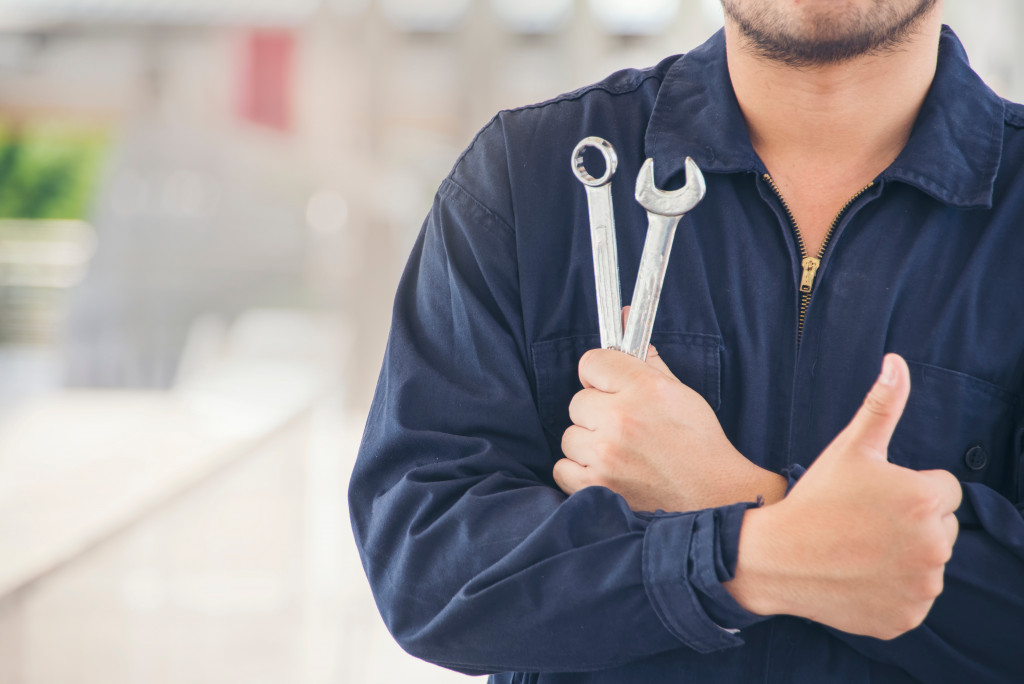You might get stranded on a lonely road with a broken car, not knowing what the problem is and what you can do about it. By then, you might feel pressured about learning the basics of diagnostics and repair. While you can call emergency landlines, friends, or technicians, the waiting might seem like forever.
One usually needs to visit a car shop for check engine services and other similar maintenance tasks. However, some people do vehicle maintenance and repairs as a hobby, while others become mechanics. These people, when they go to tool stores, look at the store like a candy shop and tools like candies.
You might not have this propensity toward mechanical matters, but you can always learn the basics. You wouldn’t want to get stuck on the road again clueless. So secure the tools and knowledge beforehand, for you never know when the next time is that you will encounter car damage.
Diagnostic Tools to Have
When you realize you want to know at least how to do the basic diagnostics by yourself, here are some tools you might want to consider adding to your emergency repertoire:
-
Multimeter
A multimeter can help you with your car’s electrical system as it provides you with information such as voltage and resistance. This way, you can easily identify any battery charge, sensor, and circuit issues. Make sure you choose those that have large digital displays so you can just easily read when doing the diagnostics.
-
Fuel pressure gauge
There might be an issue in your fuel system when your car already feels slow. A faulty fuel pressure regulator might result in poor acceleration, excessive noise in the fuel pump, reduced fuel mileage, black smoke from the exhaust, engine backfires, and more. A fuel pressure gauge will help you accurately determine if your engine gets the right amount of fuel to function correctly. One of the best ways to prevent any fuel system problems is not driving with a gas less than a quarter.
-
Scan tool
Just like a technician, if you use a scan tool, you’ll be able to know which exact part in your car is malfunctioning. Scan tools help you access the car’s data and codes so you can be spared from the guessing, hassling overall car assessment, and immediately direct your concern to the faulty areas.
The price will vary depending on how deep it can check and provide information. They might be accessed through wires, Bluetooth, or Wi-Fi. With Wi-Fi options, you can even connect your smartphone, so checking what’s wrong with your car is just one click away.

-
Non-contact thermometer
Some areas can get very hot, which you should never touch. With this, you will need the aid of a non-contact thermometer. This device can significantly help you check the temperatures on parts that you can hardly reach or touch. Your car can easily get hot when friction builds up or airflow is restricted.
Your engine might be overheating when the coolant is already leaking on the ground. You might smell something hot in the machine, hear thumping and ticking noises, notice engine power reduction, and more. When anything like this goes wrong, don’t touch the area to make sure it’s hot. Use a non-contact thermometer instead.
-
Mechanic’s stethoscope
Ever wonder why you sometimes experience strange rattles and shakes when driving? A mechanic’s stethoscope will let you immediately know what’s wrong with your car at the moment. It’s like a mechanical equivalent of a medical stethoscope but just used to check the noises within your car’s engine.
Basic Engine Repair Tools You Might Want to Have Handy
Who knows when repair tools would come in handy? It makes sense to store a few tools in your car’s trunk or garage at home, too. Ensure that you have both the standard and metric wrenches, as they are the most used tools for any engine work. Secure sockets to use for the most basic repairs.
Like wrenches, make sure you have the standard and metric sizes as well shallow and deep sets. Also, locking pliers are a must-have so you can free your hands while the device holds any item firmly in place. Add pliers, wire cutters, pry bar, screwdrivers, and many other repair tools you deem necessary.
When to DIY or Get a Technician
With your diagnostics and repair tools, you might want to go as far as doing the repairs yourself. But make sure that you handle only the basics if you’re not confident about what you do so that you don’t cause further damage. Leave the complicated issues to your mechanic; they’re the best at addressing them.




